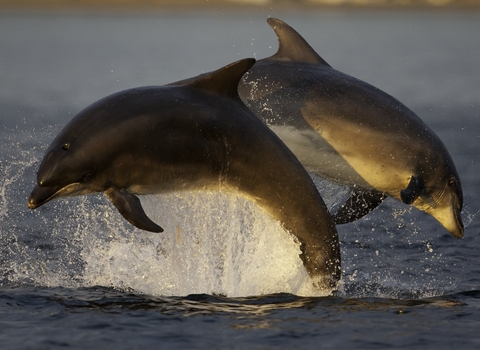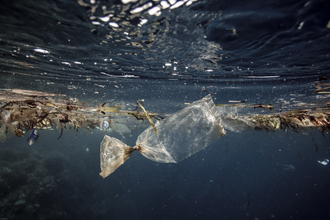There are dolphins in Yorkshire?!
You might not realise it, but you don’t have to travel to far-flung places to see dolphins, in-fact with a bit of luck and a pair of binoculars, you don’t even need to leave Yorkshire!
With regular sightings in Scarborough, Yorkshire’s most common dolphin species is the charismatic and highly sociable bottlenose dolphin. Often seen in groups (or pods) of up to 15 animals, these acrobatic marine mammals are regularly spotted somersaulting through the waves close to Yorkshire’s shores. Weighing in at an average of 500kg, the UK’s bottlenose dolphins are the largest in the world.
But even these graceful marine giants are struggling. Human activity, pollution and lack of protection has scarred and weakened Yorkshire’s seas, leaving them damaged and depleted.
On a daily basis, micro-plastics and tangles of deadly rubbish are polluting our beaches and choking our wildlife. Marine mammals, already under threat nationally, face the alarming reality of stomachs filled with plastic and chemical-filled waters.
We are working to protect Yorkshire’s seas and the wildlife who call them home from the impacts of the climate emergency, pollution and exploitation. We have ten years to turn the tide or Yorkshire’s seas could fall silent forever.
Please help us to give our seas a chance.
Getting to know our dolphins What's happening to our dolphins
Yorkshire’s dolphins are facing a dilemma!
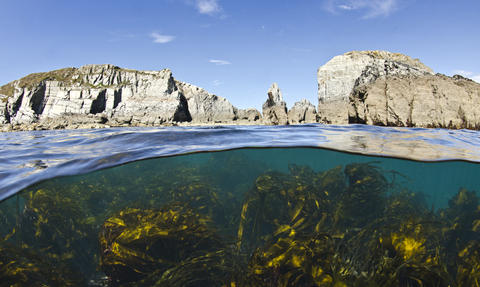
Kelp under the sea (c) Alexander Mustard
We are at a turning point.
Yorkshire’s dolphins
There are four different species of dolphin that visit the UK’s seas. Some are rarer than others, but all of them have been recorded along Yorkshire's coastline!

Bottlenose dolphin
This chunky dolphin can grow up-to 4m and has a lifespan of between 45 to 50 years. It has a short stubby beak and a large sickle shaped dorsal fin and is often spotted in small groups close to our shorelines. Keep an eye out for boisterous splashing and breaching and you might be lucky enough to spot one of these amazing marine acrobats.

Common dolphin
These energetic dolphins are fast and are capable of reaching speeds of up to 30 miles per hour! Although they come closer to shore to feed, the common dolphin is an offshore species that is often seen in large groups travelling at high speeds. At sea they occasionally form superpods - groups made up of thousands of individuals.
These dolphins can be identified by their tall, triangular dorsal fin and distinctive hourglass pattern on their sides
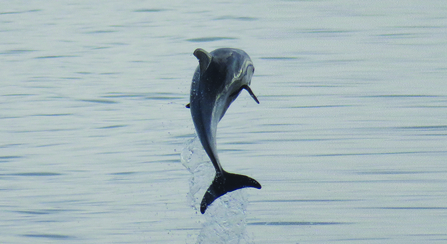
White-beaked dolphin
This large stocky dolphin can grow to an average length of 3.2m. Although it is most easily identified by the distinctive white beak that gives this species its name, the white flash on its sides and back help to differentiate it from other dolphins.

Rissos dolphin
These mysterious, stocky dolphins are most often found in deep, offshore waters where they hunt and feed on squid and octopus. They are most easily recognised by their large, domed heads and white colourings. Individuals can be identified by the unique battle scars that cover their bodies, believed to be a result of rough behaviour including fighting and catching prey.
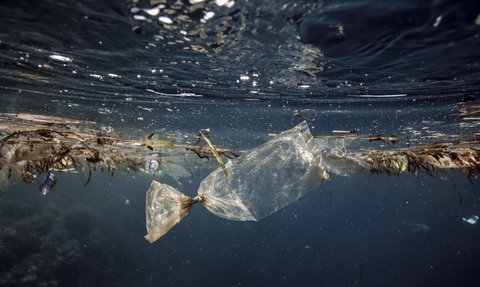
Plastic bag drifting underwater - stock photo from I-Stock (I-Stock Reff 1163261275)
We can help dolphins by turning the tide on marine pollution

What’s happening to our dolphins?
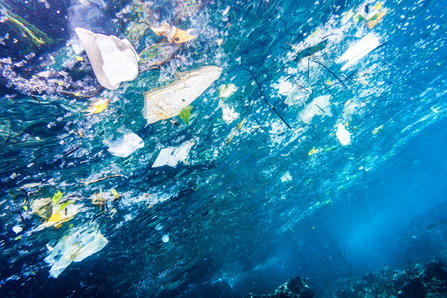
Our seas are drowning in waste
Approximately 20,000 tonnes of litter and single use waste is dumped into the North Sea every year and only 15% of that is washed ashore.
The rest accumulates in our seas where it indiscriminately chokes, entangles and kills nearly all of our marine wildlife - from the smallest micro-plastic absorbing plankton to the largest whale with it’s stomach full of plastic bags. It is predicted that, worldwide, there will be more plastic in our seas than fish by 2050.

Ghost gear
One of the biggest threats to dolphins is lost and abandoned fishing waste like nets and line - also known as ghost gear. More often that not these pieces of fishing equipment are accidentally lost and become snagged on rocks. Although they may be lost at sea, these dangerous pieces of equipment continue to function - entrapping fish and crabs which attract other creatures like dolphins and seals who themselves also become entangled.
As well as nets, hooks and lines are also often lost at sea, where they dig in to the skin of dolphins and fish, becoming caught around their tails and fin, preventing them from hunting and breathing, ultimately causing death.

Donate £32
£32 could help train and equip citizen scientists to undertake critical whale and dolphin surveys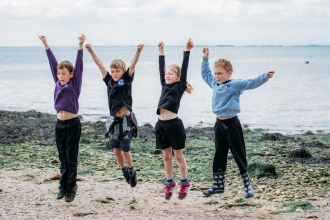
Donate £41
£41 could help a child have their first experience of the seashore through a rock-pooling activity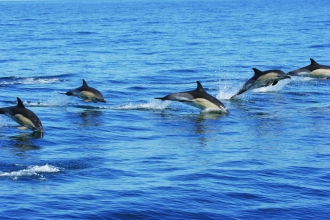
Donate £128
£128 could pay for specialist equipment and training to help monitor dolphins and whales from the shore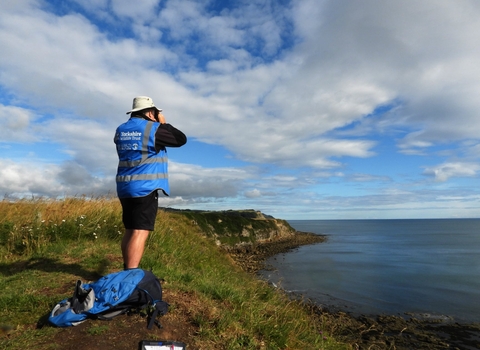
(c) Simon Ward
You can help us learn about our dolphins
In order to protect our seas from exploitation, we first need to understand as much as we can about them. Data on our our incredible marine wildlife is invaluable - where they are feeding, where they are breeding and how their behaviour is changing.
In partnership with Sea Watch Foundation, we recruit and train volunteers every year as citizen scientists, who conduct surveys of our whales, dolphins and porpoises up and down the Yorkshire coast.
We need your help to protect our seas
And finally...
Can you Give Seas a Chance by sharing our campaign on social media?
Thank you for your support!


